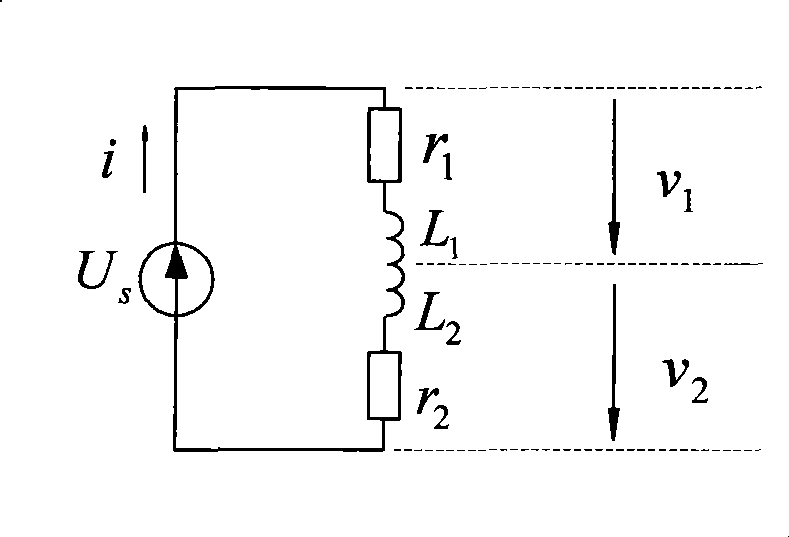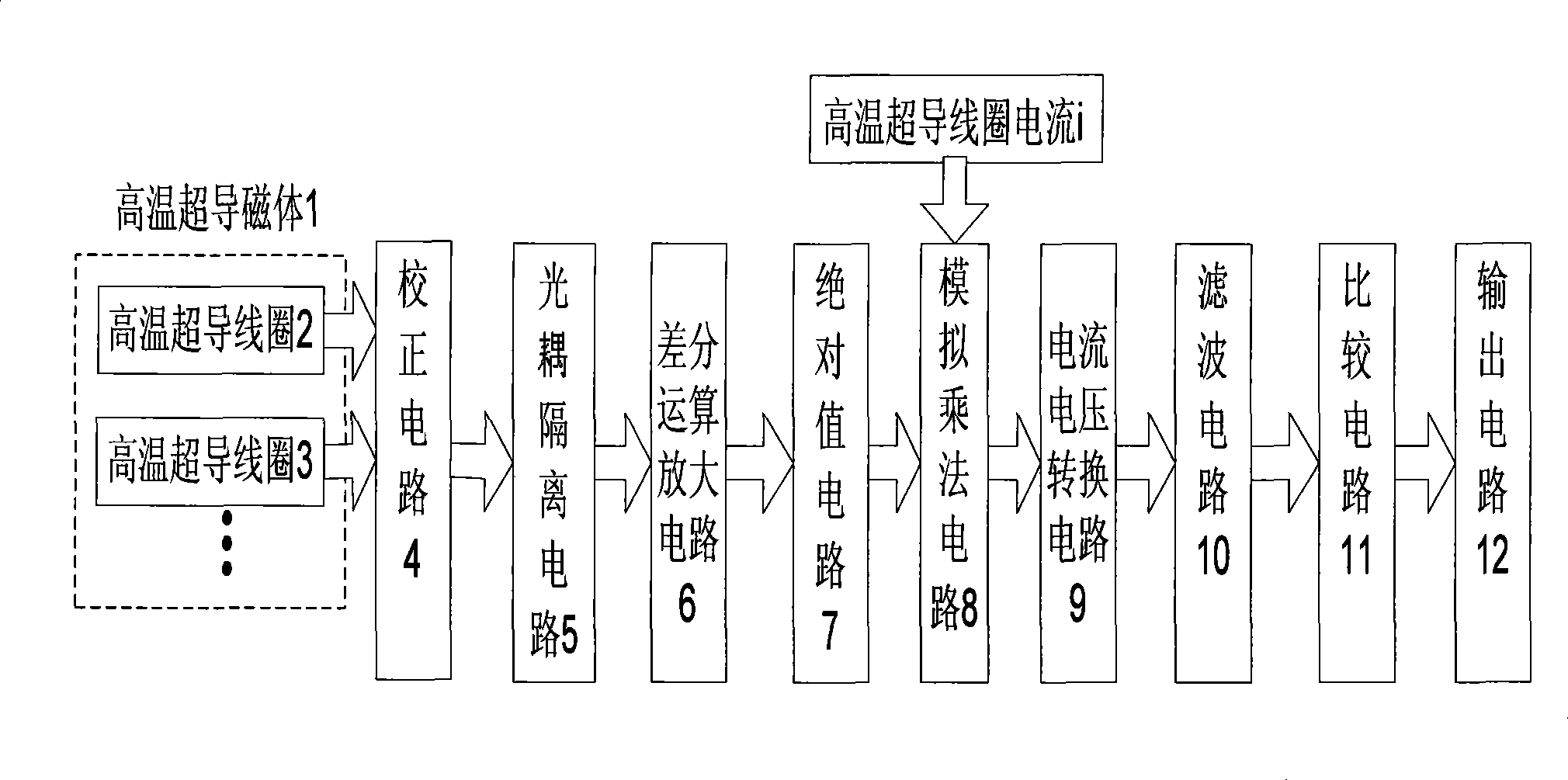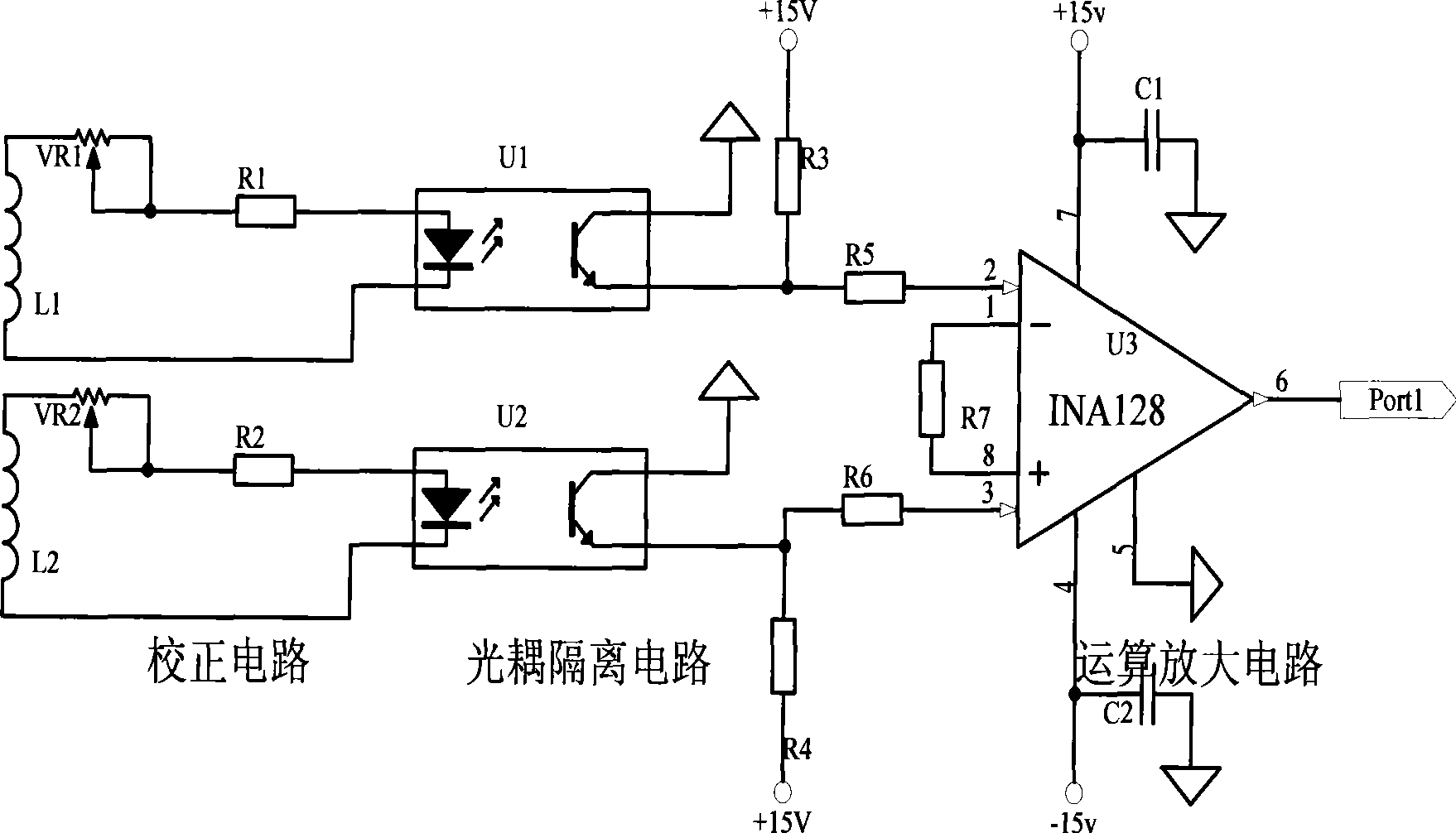Quench-detection circuit of high-temperature superconducting magnet
A high-temperature superconducting and detection circuit technology, which is applied in the direction of measuring electricity, measuring electrical variables, and measuring devices, can solve the problems of permanent damage to high-temperature superconducting magnets, damage to high-temperature superconducting magnets, and slow quench propagation speed, etc., to achieve The effect of fast speed, improved accuracy, and reduced influence of interference signals
- Summary
- Abstract
- Description
- Claims
- Application Information
AI Technical Summary
Problems solved by technology
Method used
Image
Examples
Embodiment Construction
[0019] The present invention will be further described below in conjunction with the accompanying drawings.
[0020] figure 2 It shows a schematic diagram of quench detection for high-temperature superconducting magnets, which consists of the following parts: high-temperature superconducting magnet 1, high-temperature superconducting coil 2, high-temperature superconducting coil 3, correction circuit 4, optocoupler isolation circuit 5, differential calculation Amplifying circuit 6, absolute value circuit 7, analog multiplication circuit 8, current-voltage conversion circuit 9, filter circuit 10, comparison circuit 11 and output circuit 12, wherein high temperature superconducting magnet 1 is composed of high temperature superconducting coil 2, high temperature superconducting coil 3 high temperature superconducting coils connected in series. Taking the high-temperature superconducting coil 2 and the high-temperature superconducting coil 3 as an example, the specific implemen...
PUM
 Login to View More
Login to View More Abstract
Description
Claims
Application Information
 Login to View More
Login to View More - R&D
- Intellectual Property
- Life Sciences
- Materials
- Tech Scout
- Unparalleled Data Quality
- Higher Quality Content
- 60% Fewer Hallucinations
Browse by: Latest US Patents, China's latest patents, Technical Efficacy Thesaurus, Application Domain, Technology Topic, Popular Technical Reports.
© 2025 PatSnap. All rights reserved.Legal|Privacy policy|Modern Slavery Act Transparency Statement|Sitemap|About US| Contact US: help@patsnap.com



